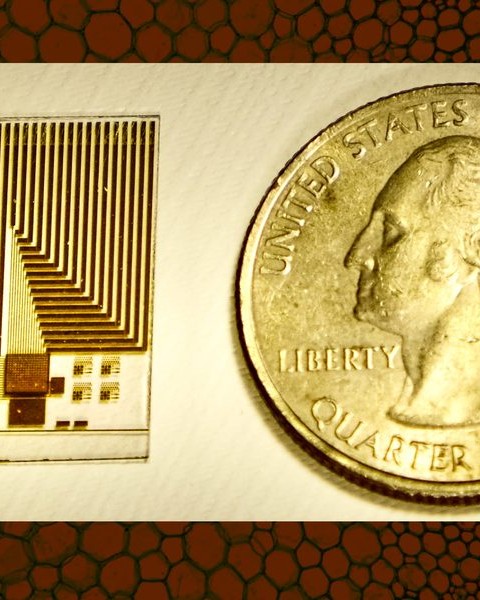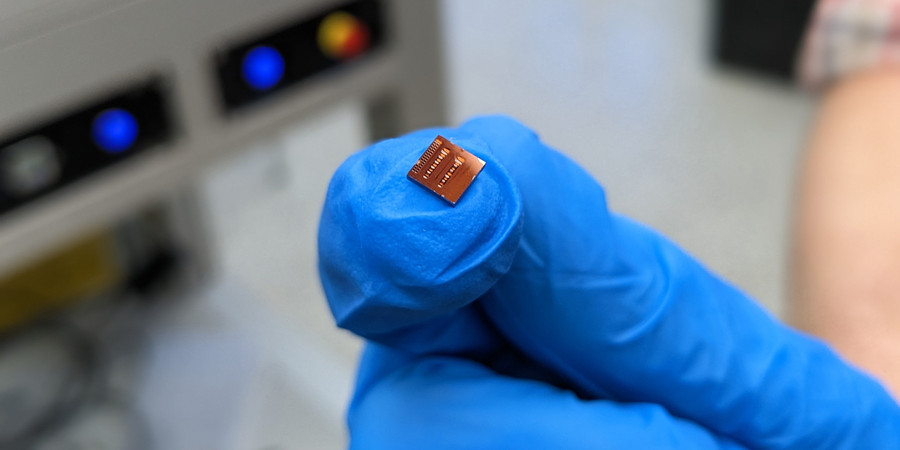July 21, 2023
Drawing inspiration from natural sensory systems, an MIT-led team has designed a novel sensor that could detect the same molecules that naturally occurring cell receptors can identify.
In work that combines several new technologies, the researchers created a prototype sensor that can detect an immune molecule called CXCL12, down to tens or hundreds of parts per billion. This is an important first step to developing a system that could be used to perform routine screens for hard-to-diagnose cancers or metastatic tumors, or as a highly biomimetic electronic “nose,” the researchers say.
“Our hope is to develop a simple device that lets you do at-home testing, with high specificity and sensitivity. The earlier you detect cancer, the better the treatment, so early diagnostics for cancer is one important area we want to go in,” says Shuguang Zhang, a principal research scientist in MIT’s Media Lab.
The device draws inspiration from the membrane that surrounds all cells. Within such membranes are thousands of receptor proteins that detect molecules in the environment. The MIT team modified some of these proteins so that they could survive outside the membrane, and anchored them in a layer of crystallized proteins atop an array of graphene transistors. When the target molecule is detected in a sample, these transistors relay the information to a computer or smartphone.
Complete article from MIT News.
Explore
Bringing Lab Testing to the Home
Zach Winn | MIT News
The startup SiPhox, founded by two former MIT researchers, has developed an integrated photonic chip for high-quality, home-based blood testing.
This Tiny, Tamper-proof ID Tag Can Authenticate Almost Anything
Adam Zewe | MIT News
MIT engineers developed a tag that can reveal with near-perfect accuracy whether an item is real or fake. The key is in the glue on the back of the tag.
Sensing with Purpose
Adam Zewe | MIT News Office
Fadel Adib uses wireless technologies to sense the world in new ways, taking aim at sweeping problems such as food insecurity, climate change, and access to health care.




